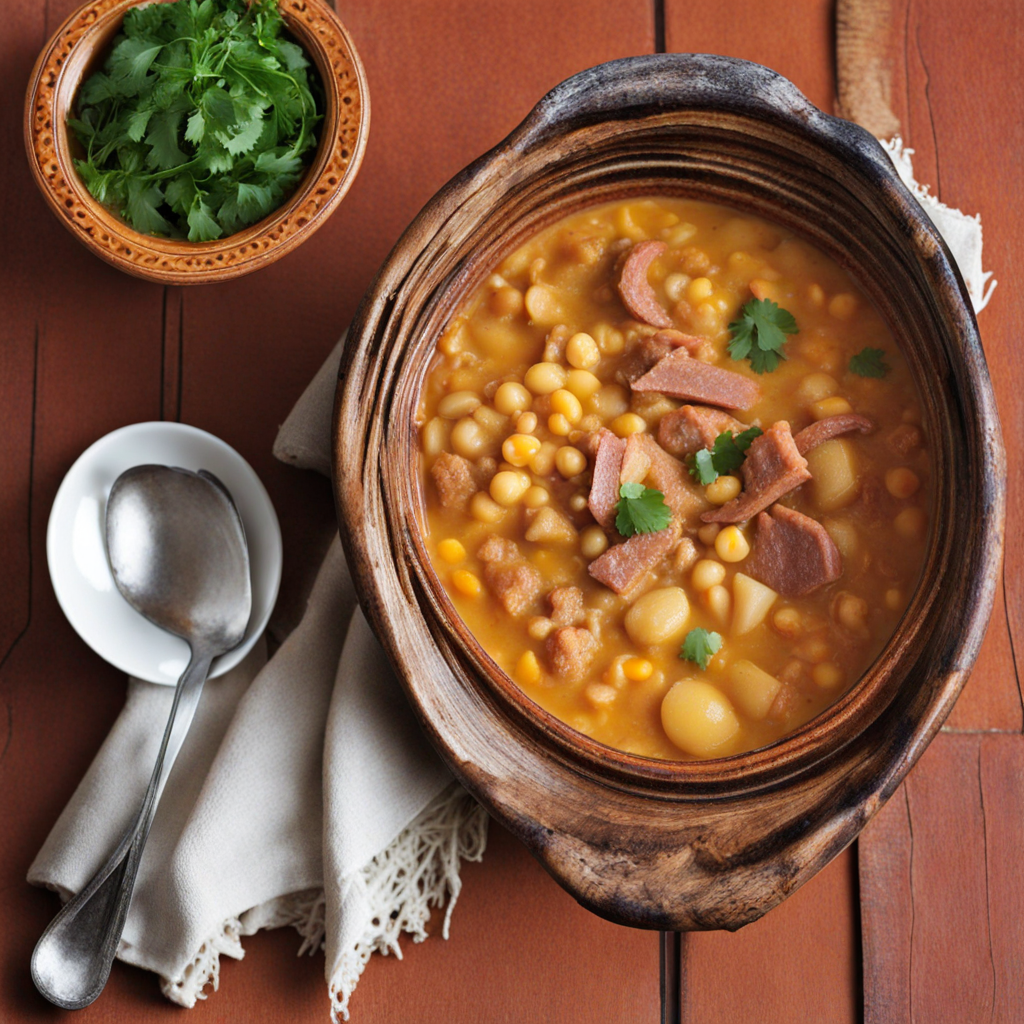Alfajor
Alfajor is a delightful Argentine treat that encapsulates the rich culinary heritage of the country. This sweet confection typically consists of two crumbly cookies, often made from a combination of flour, cornstarch, and sometimes cocoa powder, which gives them a soft, melt-in-your-mouth texture. The cookies are generously filled with a luscious layer of dulce de leche, a creamy caramel-like spread made from sweetened condensed milk that is slowly cooked until it thickens. The balance of flavors between the mildly sweet cookies and the rich, indulgent filling creates a harmonious taste experience that is both comforting and indulgent. As you bite into an alfajor, you might notice the cookies' subtle crunch giving way to the gooey sweetness of the dulce de leche, creating a delightful contrast that keeps you coming back for more. Many alfajores are also coated in a layer of chocolate—either dark, milk, or white—adding another dimension of flavor and decadence. Additionally, they may be dusted with powdered sugar or rolled in shredded coconut, enhancing their visual appeal and providing a pleasant texture that complements the smooth filling. Alfajores come in various regional styles across Argentina, with some variations incorporating different flavors such as citrus zest or nuts, and others featuring unique coatings like fondant or icing. These treats are often enjoyed as a snack or dessert, paired perfectly with a cup of mate or coffee, making them a popular choice for social gatherings and celebrations. Whether you're indulging in a traditional version or experimenting with creative twists, the alfajor is a charming glimpse into Argentine culture and an unforgettable taste experience that showcases the country's love for sweet delights.
How It Became This Dish
The Alfajor, a delightful confection that has become emblematic of Argentine cuisine, has a rich history that traverses centuries and continents. Its origins can be traced back to the Moors in the Iberian Peninsula, where a similar treat called the "alajú" was created. This early version of the alfajor was made with honey, nuts, and spices, reflecting the culinary influences of the Islamic culture that ruled parts of Spain from the 8th to the 15th centuries. After the Reconquista, as the Moors were expelled, the tradition of making these sweet treats continued, evolving into the alfajor we recognize today. The word "alfajor" itself is derived from the Arabic term "al-hasú," meaning "stuffed." When Spanish colonists arrived in the Americas, they brought their culinary traditions with them, including the alfajor. Initially, the alfajor was popular in coastal regions, but over time it spread throughout the continent, finding a particularly warm welcome in Argentina during the colonial period. By the 19th century, alfajores began to take on a unique form in Argentina, particularly in the provinces of Córdoba and Buenos Aires. In Argentina, the alfajor transformed from a simple confection into a cultural icon. The traditional Argentine alfajor consists of two soft cookies, often made with cornstarch or flour, filled with a rich layer of dulce de leche, a caramel-like spread made from condensed milk. The cookies are usually coated in chocolate or dusted with powdered sugar or coconut. This delightful combination of textures and flavors quickly made the alfajor a beloved snack among Argentinians, enjoyed by people of all ages. The cultural significance of the alfajor in Argentina cannot be overstated. It is more than just a dessert; it represents a sense of identity and nostalgia for many people. Alfajores are often associated with celebrations and special occasions, such as birthdays, holidays, and family gatherings. They are also a popular gift, symbolizing hospitality and thoughtfulness. In recent years, alfajores have gained international attention, with many Argentine expatriates introducing this treat to their new homes, further solidifying its status as a national symbol. As the 20th century progressed, the production of alfajores began to modernize. While traditional artisanal methods remained popular, the rise of industrialization led to the mass production of alfajores. Major brands emerged, such as Havanna and Jorgito, which catered to a growing consumer base. These brands standardized the product, ensuring consistency in quality and flavor. The industrial alfajor, often individually wrapped for convenience, became a staple in supermarkets and convenience stores, making it accessible to a broader audience. Despite the rise of industrial production, the artisanal alfajor has not lost its charm. Small bakeries and local producers continue to craft unique variations of alfajores, often incorporating regional ingredients and flavors. Some bakeries experiment with fillings like fruits, chocolate, or even savory options. The diversification of alfajor flavors reflects Argentina's rich culinary landscape and the creativity of its people. For instance, alfajores filled with maracuyá (passion fruit) or mango have gained popularity, showcasing the influence of local fruits. The alfajor also plays a role in Argentina's vibrant street food culture. Street vendors and food markets often feature alfajores, allowing both locals and tourists to indulge in this beloved treat. Festivals celebrating traditional Argentine foods frequently include alfajores as a highlight, demonstrating their importance in the nation's culinary heritage. These events often serve as a gathering point for communities, fostering connections through shared experiences around food. In recent years, the alfajor has also found its way into contemporary cuisine, with chefs incorporating it into gourmet desserts. Innovative recipes may include alfajor crumbles, alfajor ice cream sandwiches, or even alfajor-inspired pastries. This fusion of traditional and modern culinary techniques reflects the adaptability of the alfajor and its enduring appeal in a rapidly changing food landscape. Furthermore, the alfajor has become a symbol of Argentine national pride. It is often featured in cultural representations, from literature to television, as a quintessential aspect of Argentine life. The treat has also been included in various promotional materials aimed at boosting tourism, showcasing Argentina's culinary richness. In this sense, the alfajor serves not just as a dessert but as a cultural ambassador, inviting people worldwide to taste and appreciate Argentine heritage. The history of the alfajor is also intertwined with the stories of the many immigrant communities that have settled in Argentina. As each group brought its own culinary traditions, the alfajor absorbed these influences, reflecting the country’s multicultural identity. Italian, Spanish, and indigenous culinary practices have all contributed to the evolution of the alfajor, making it a symbol of culinary fusion and multiculturalism in Argentina. Today, alfajores are widely enjoyed across Latin America, with variations appearing in countries like Peru, Chile, and Uruguay. Each nation has adapted the recipe to suit local tastes, resulting in distinct versions of the alfajor. For instance, in Peru, alfajores might be filled with manjar blanco, a variation of dulce de leche, while in Uruguay, they are often coated in chocolate. This regional diversity highlights the alfajor’s versatility and its capacity to connect different cultures through shared flavors. In conclusion, the alfajor is not merely a sweet treat; it is a testament to Argentina's rich cultural heritage and culinary evolution. From its Moorish origins to its modern interpretations, the alfajor has become a beloved symbol of Argentine identity, cherished by generations. Its adaptability and significance continue to thrive, ensuring that this delectable confection remains a staple in the hearts and homes of Argentinians, as well as a delightful discovery for food lovers around the world.
You may like
Discover local flavors from Argentina







